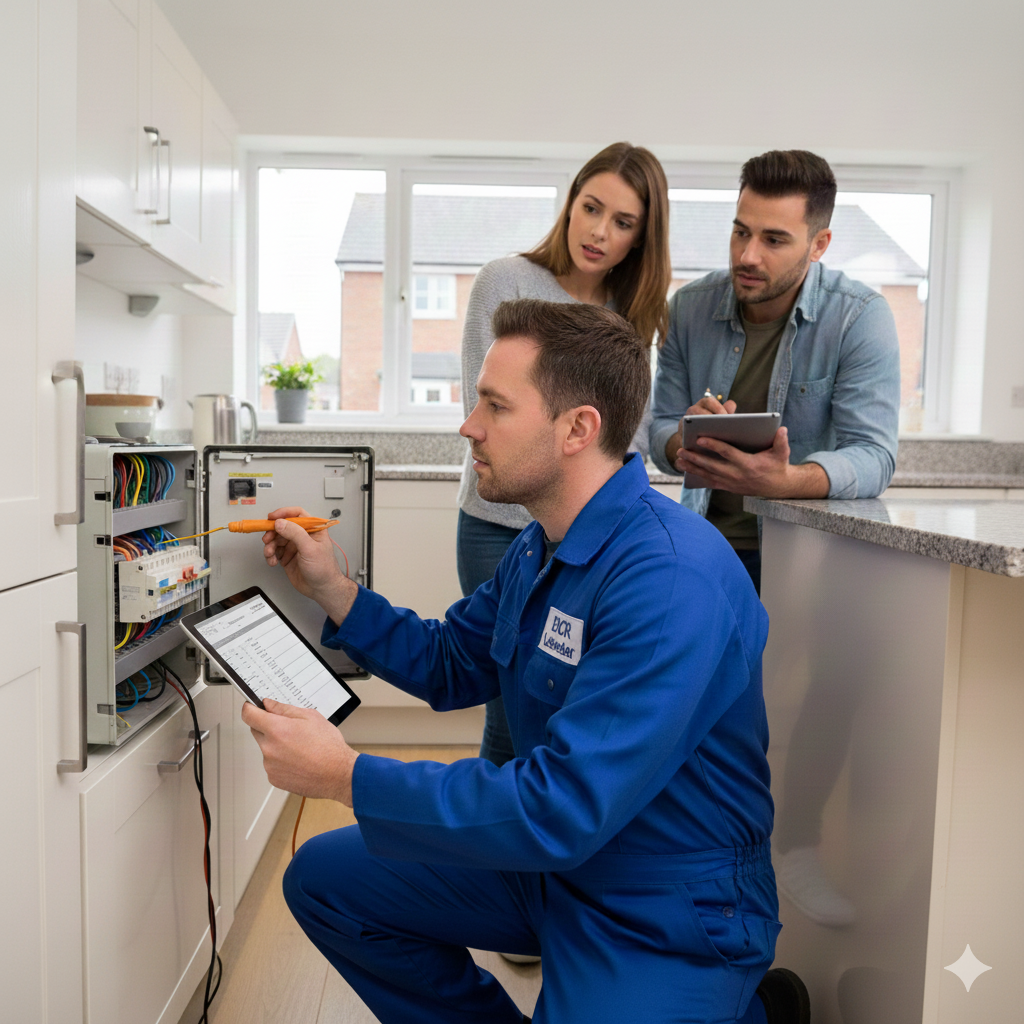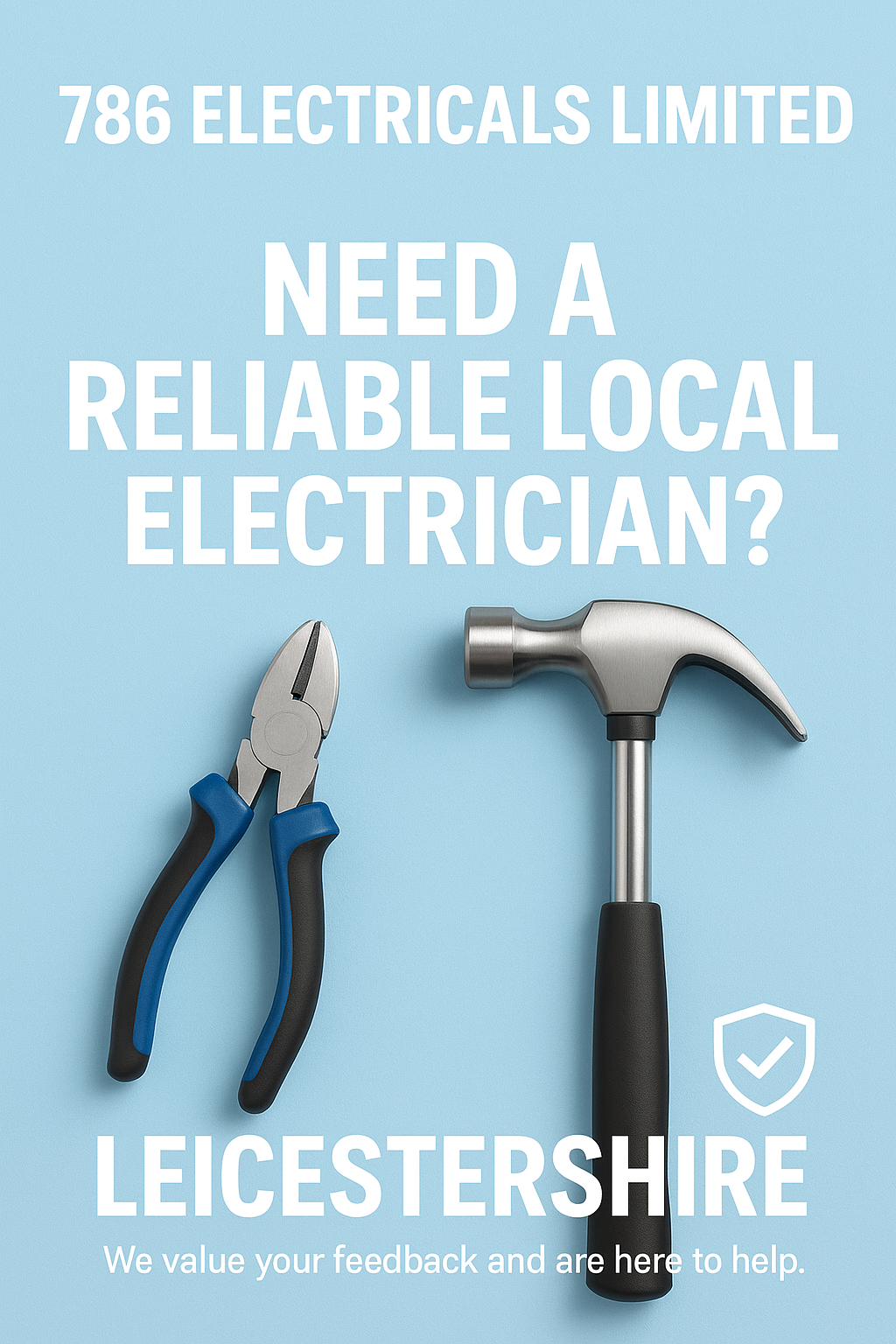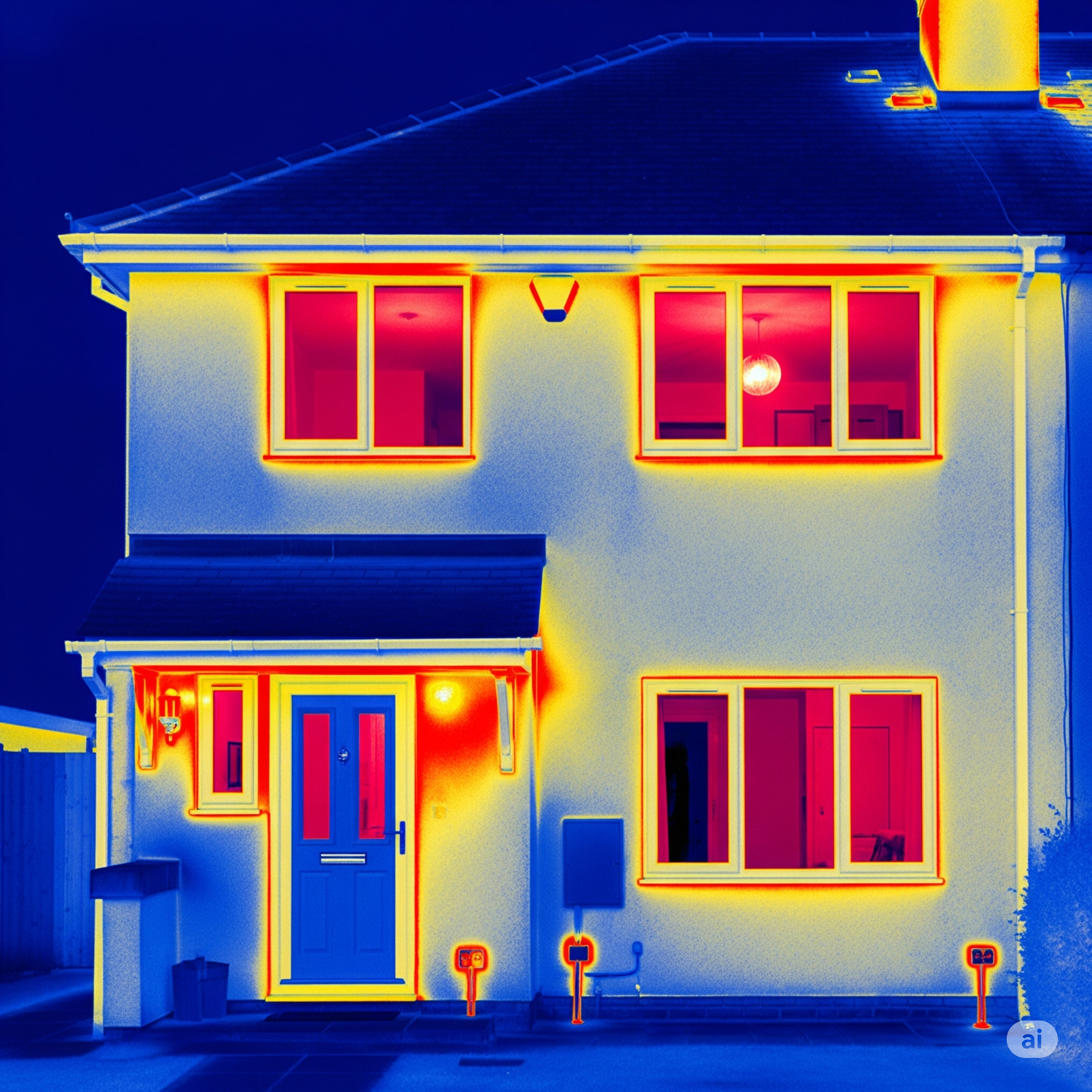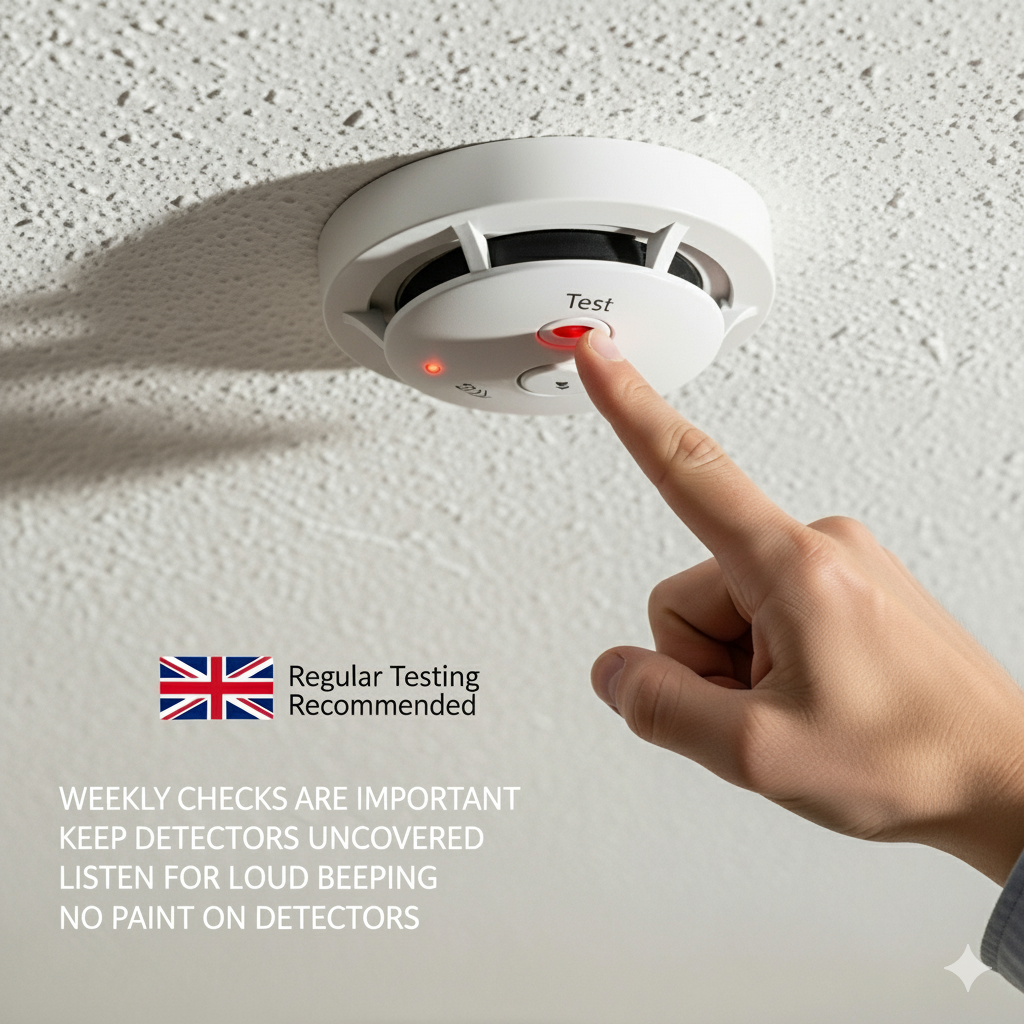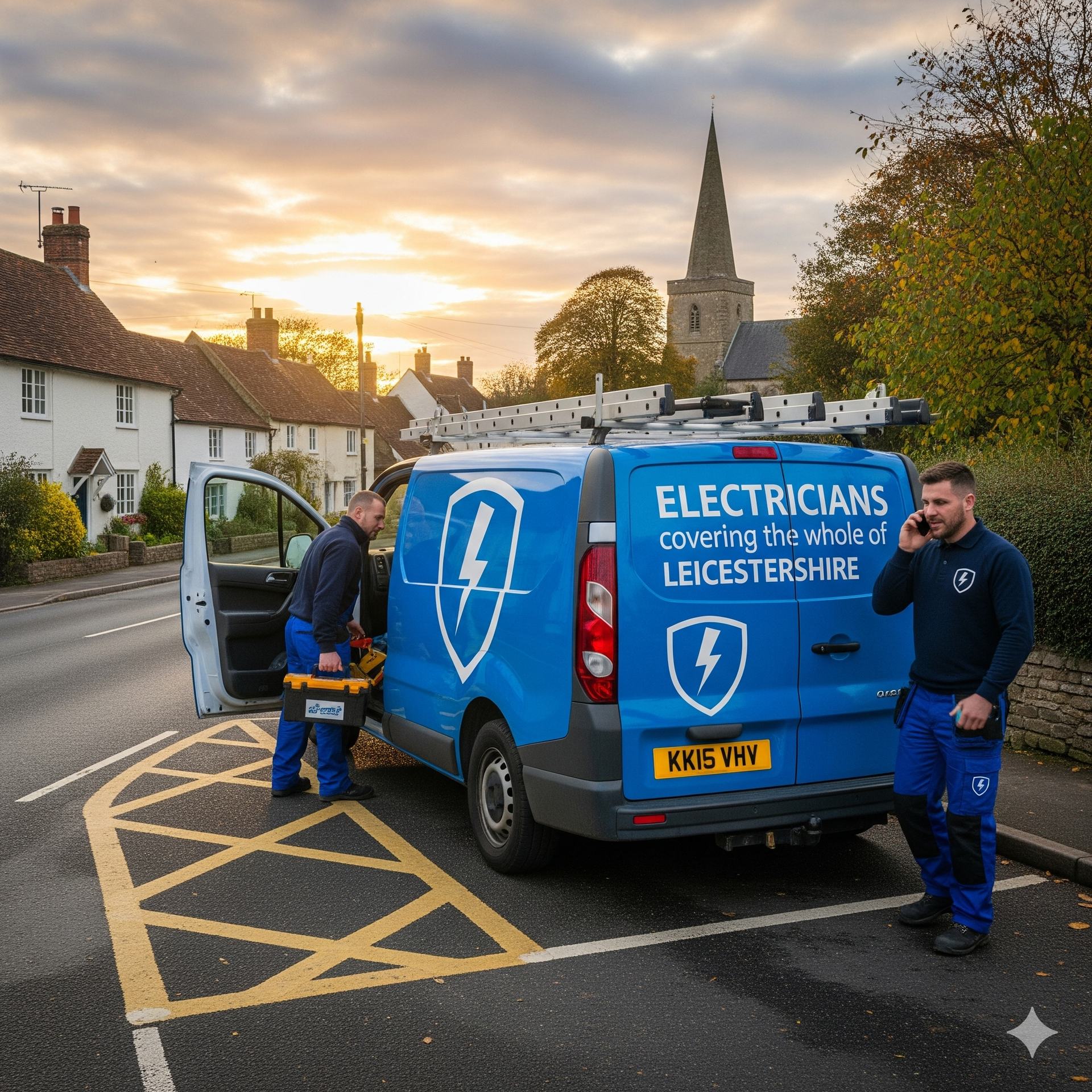The Ultimate Landlord’s Guide to EICR Certificates: Ensuring Electrical Safety & Compliance
Electrical Safety Certificates for Rental Properties: The EICR Explained
As a landlord, your top priority is keeping your rental property safe and legally compliant. One of the most crucial safety checks you must carry out is an Electrical Installation Condition Report (EICR). At 786 Electricals, we are experts in providing professional EICR inspections for landlords across Leicester and Leicestershire ensuring your property meets all UK electrical safety regulations.
In this comprehensive guide, we’ll cover everything landlords need to know about EICR certificates, including:
✅ What is an EICR Certificate?
✅ Why is an EICR Mandatory for Landlords?
✅ Legal Requirements for Rental Properties
✅ How Often Do You Need an EICR?
✅ What Does an EICR Inspection Check?
✅ Understanding EICR Codes (C1, C2, C3)
✅ What Happens If You Fail an EICR?
✅ How Much Does an EICR Cost?
✅ Choosing a Qualified Electrician for Your EICR
✅ Tips for Maintaining Electrical Safety in Rental Properties
By the end of this guide, you’ll understand exactly why an EICR certificate is essential, how to stay compliant, and how 786 Electricals can help you meet all landlord electrical safety requirements.
🔌 What is an EICR Certificate?
An Electrical Installation Condition Report (EICR) is a legal document that assesses the safety of a property’s fixed electrical installations, including:
✔ Wiring & circuits
✔ Consumer unit (fuse box)
✔ Sockets & switches
✔ Lighting fixtures
✔ Earthing & bonding
A qualified electrician conducts the inspection and issues an EICR certificate, which confirms whether the electrical system is safe or requires repairs.
Why is an EICR Different from an EIC or PAT Testing?
- EIC (Electrical Installation Certificate) – Issued for new installations (not for existing properties).
- PAT Testing (Portable Appliance Testing) – Checks plug-in appliances, not fixed wiring.
- EICR (Electrical Installation Condition Report) – The only legally required inspection for landlords to assess fixed electrical safety.
⚡ Why is an EICR Mandatory for Landlords?
Since June 2020, the Electrical Safety Standards in the Private Rented Sector (England) Regulations require all landlords to:
✔ Get an EICR every 5 years (or sooner if recommended).
✔ Provide a copy to tenants before they move in.
✔ Supply the report to local authorities if requested.
✔ Complete any necessary repairs within 28 days (or sooner for dangerous faults).
Penalties for Non-Compliance
🚨 Fines of up to £30,000
🚨 Invalidated landlord insurance
🚨 Difficulty evicting tenants under Section 21
An EICR certificate is not just a legal requirement—it protects your tenants from electrical fires and shocks and safeguards your investment.
📜 Legal Requirements for Rental Properties
1. Who Needs an EICR?
- Private landlords (England & Wales)
- HMO landlords (more frequent checks may be required)
- Scotland landlords (similar regulations under Private Rented Housing (Scotland) Act)
2. When Must You Get an EICR?
- New tenancies (since June 2020) – EICR required before tenants move in.
- Existing tenancies – Must have had an EICR by April 2021.
- Renewals – Every 5 years (or sooner if defects are found).
3. What Must You Do with the EICR Report?
- Give tenants a copy within 28 days of inspection.
- Keep records for the next inspection.
- Provide local authorities with proof if requested.
🔍 What Does an EICR Inspection Check?
During an EICR test, a certified electrician will:
✔ Inspect the consumer unit (fuse box) – Checking for RCD protection (required by law).
✔ Test wiring & circuits – Looking for damage, wear, or overload risks.
✔ Check sockets & switches – Ensuring no burn marks or loose connections.
✔ Examine earthing & bonding – Critical for preventing electric shocks.
✔ Assess lighting circuits – Verifying safe installation.
The inspection is non-invasive, meaning no damage is done to walls or fittings.
⚠️ Understanding EICR Codes (C1, C2, C3)
After inspection, faults are classified into three codes:
Code Meaning Action RequiredC1Danger Present (Immediate risk)Urgent repair needed (e.g., exposed live wires)C2Potentially Dangerous Prompt repair required (e.g., faulty earthing)C3Improvement Recommended (Not dangerous)Advised but not legally required
A satisfactory EICR means no C1 or C2 faults are present.
🚨 What Happens If You Fail an EICR?
If your property receives an unsatisfactory EICR, you must:
- Fix C1 & C2 issues within 28 days (or sooner for C1).
- Hire a qualified electrician for repairs.
- Get a follow-up inspection to confirm compliance.
786 Electricals offers fast remedial work to ensure your property meets electrical safety standards.
💰 How Much Does an EICR Cost?
The EICR cost depends on:
- Property size (1-bed vs. 4-bed)
- Number of circuits
- Location
✅ Average EICR cost: £120-£250 (cheaper than fines for non-compliance!)
🔧 Choosing a Qualified Electrician for Your EICR
NAPIT electricians,EICRs. 786 Electricals provides:
✔ Certified & insured electricians
✔ Competitive pricing
✔ Same-day reports
✔ Remedial repairs if needed
💡 Tips for Maintaining Electrical Safety in Rentals
🔹 Install RCD protection (legally required in rental properties).
🔹 Test smoke alarms monthly.
🔹 Avoid overloading sockets.
🔹 Encourage tenants to report electrical issues.
📞 Need an EICR? Contact 786 Electricals Today!
Don’t risk fines or tenant safety—book your EICR inspection now!
✅ NAPIT Certified Electricians
✅ Fast, Affordable & Reliable Service
✅ Free Quotes & Landlord Advice
📞 Call 07584321989 | ✉ Email adam@786electricals.co.uk | 🌐 www.786electricals.co.uk
Final Thoughts
An EICR certificate is a legal requirement and a lifesaving precaution. By staying compliant, you protect your tenants, avoid fines, and maintain your property’s value.
For trusted EICR inspections in [your area], choose 786 Electricals—your local electrical safety experts.
🔌 Stay Safe, Stay Compliant! 🔌

